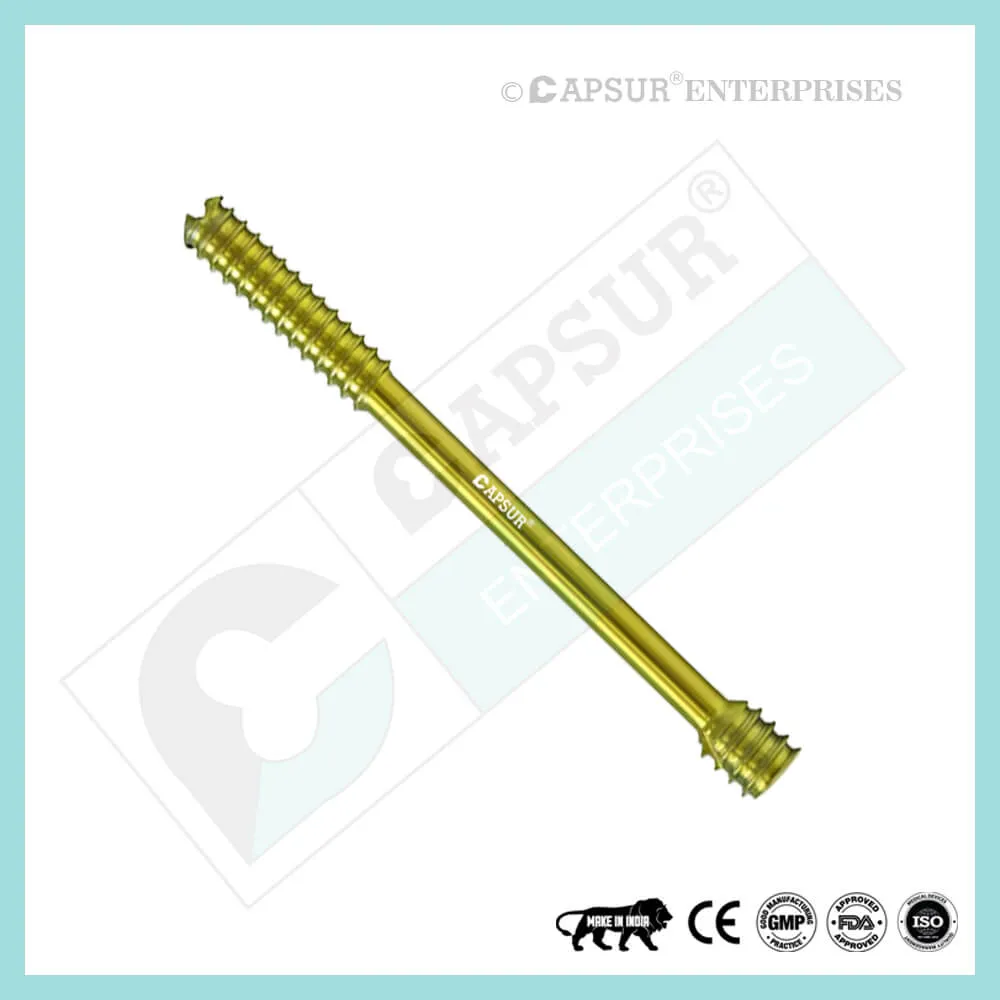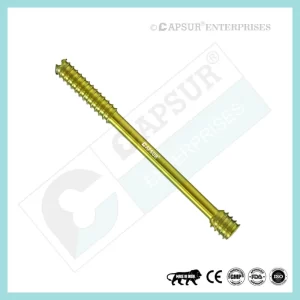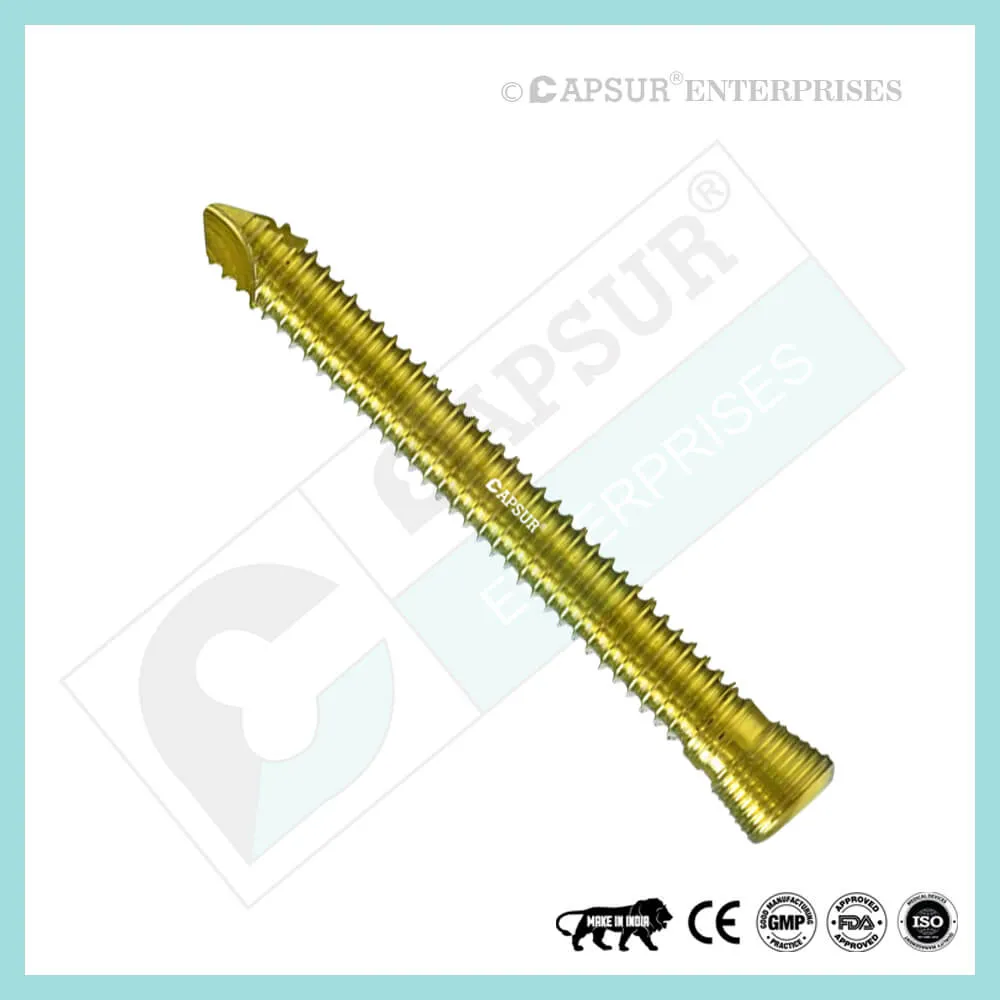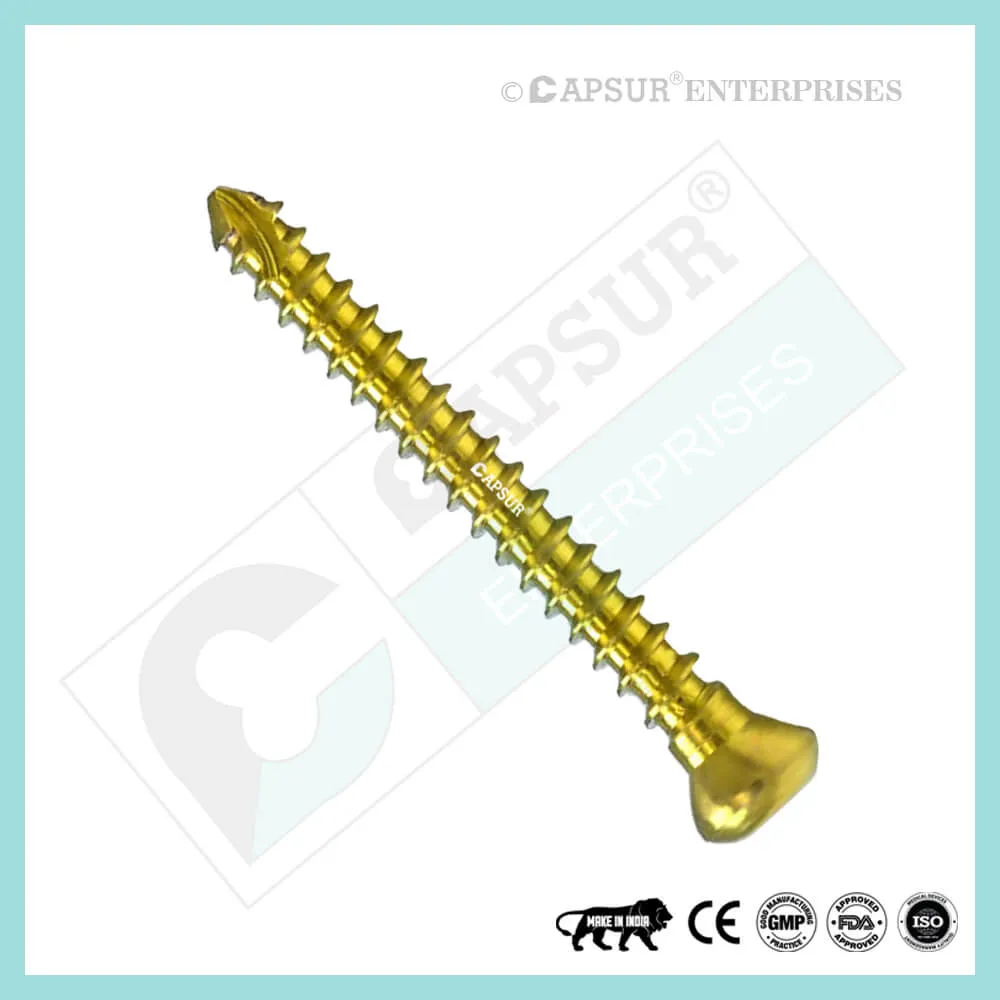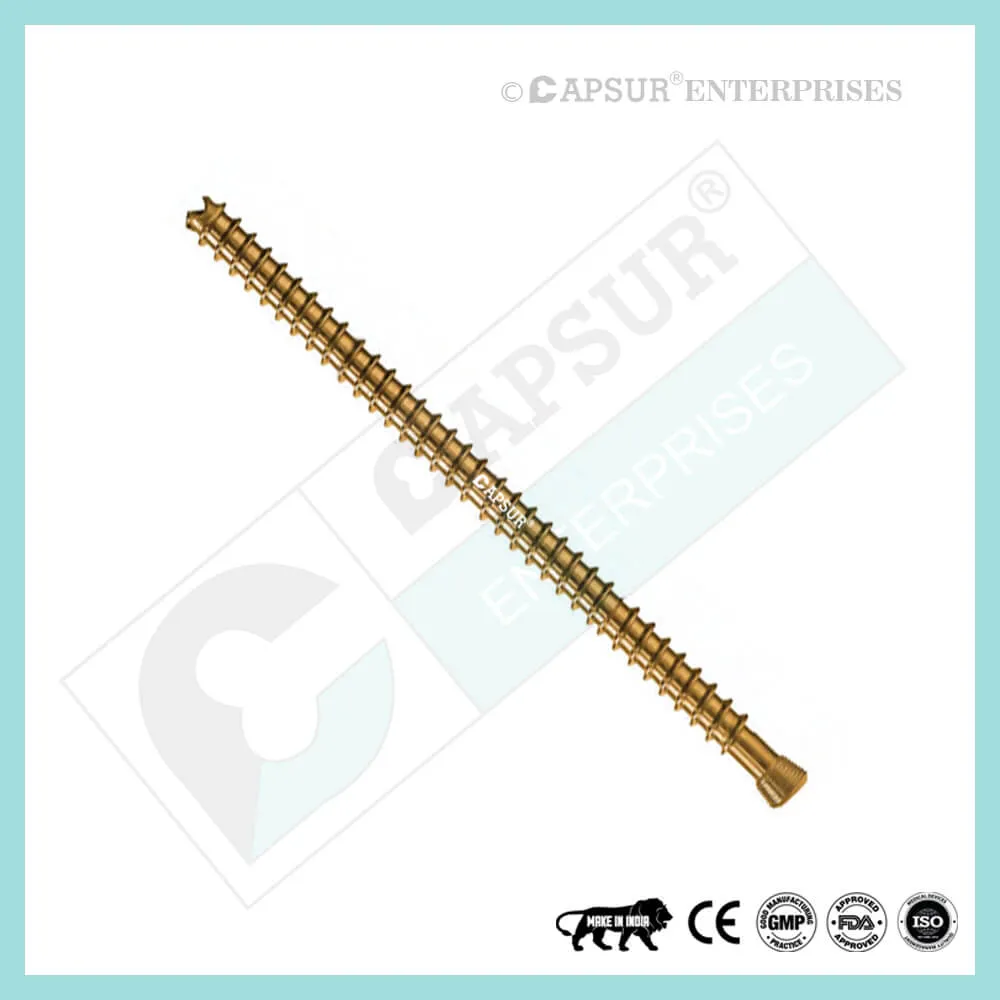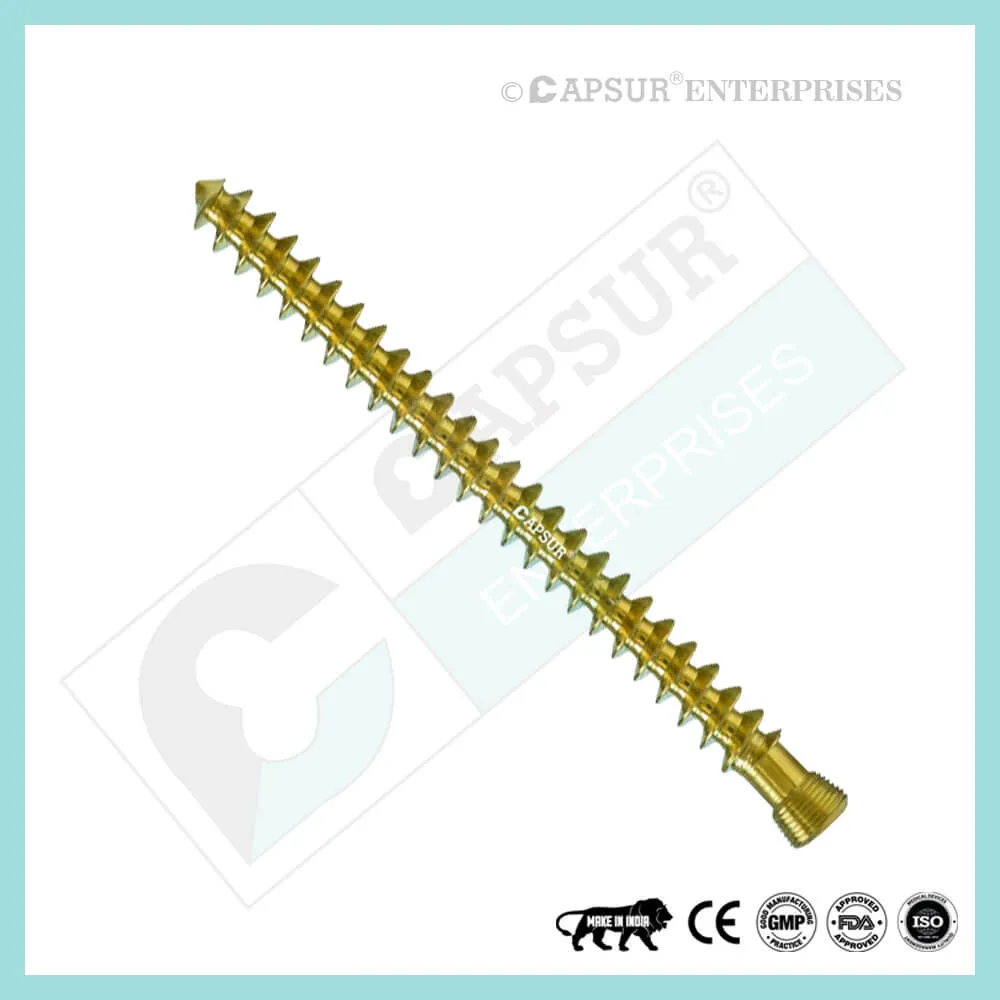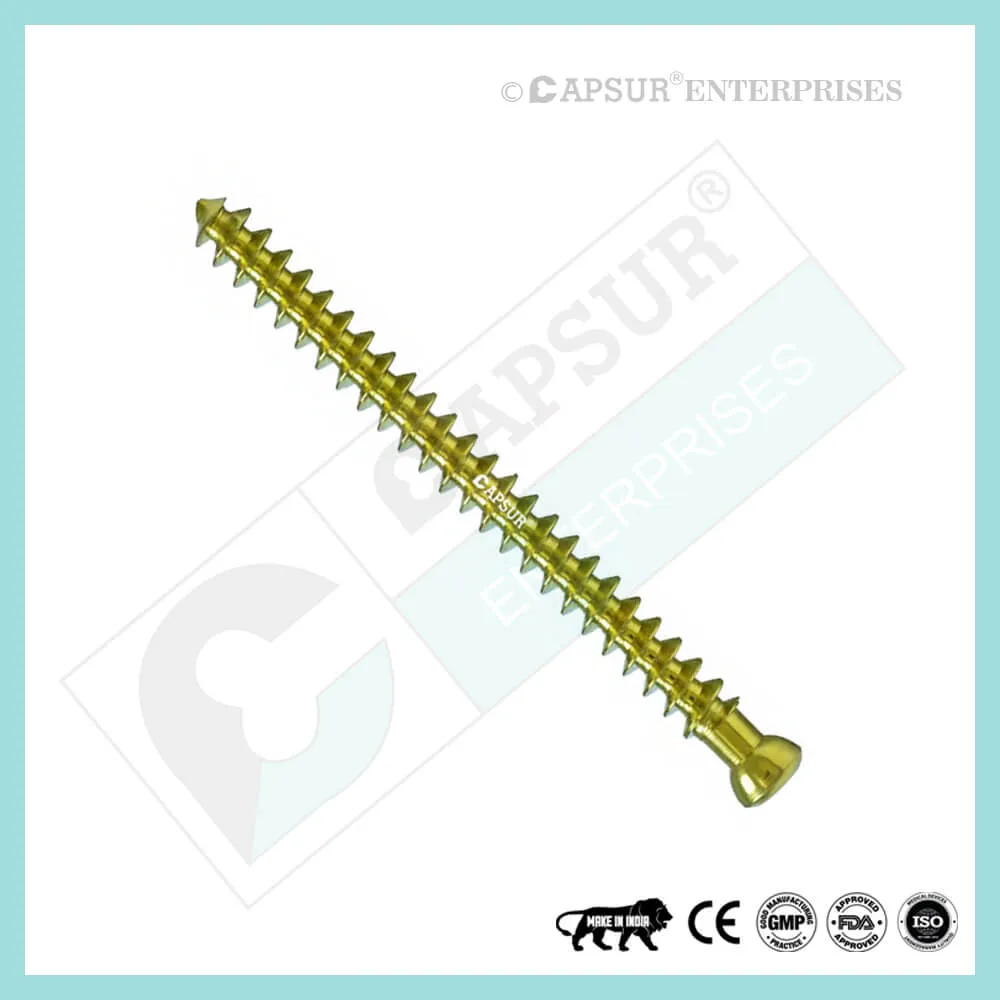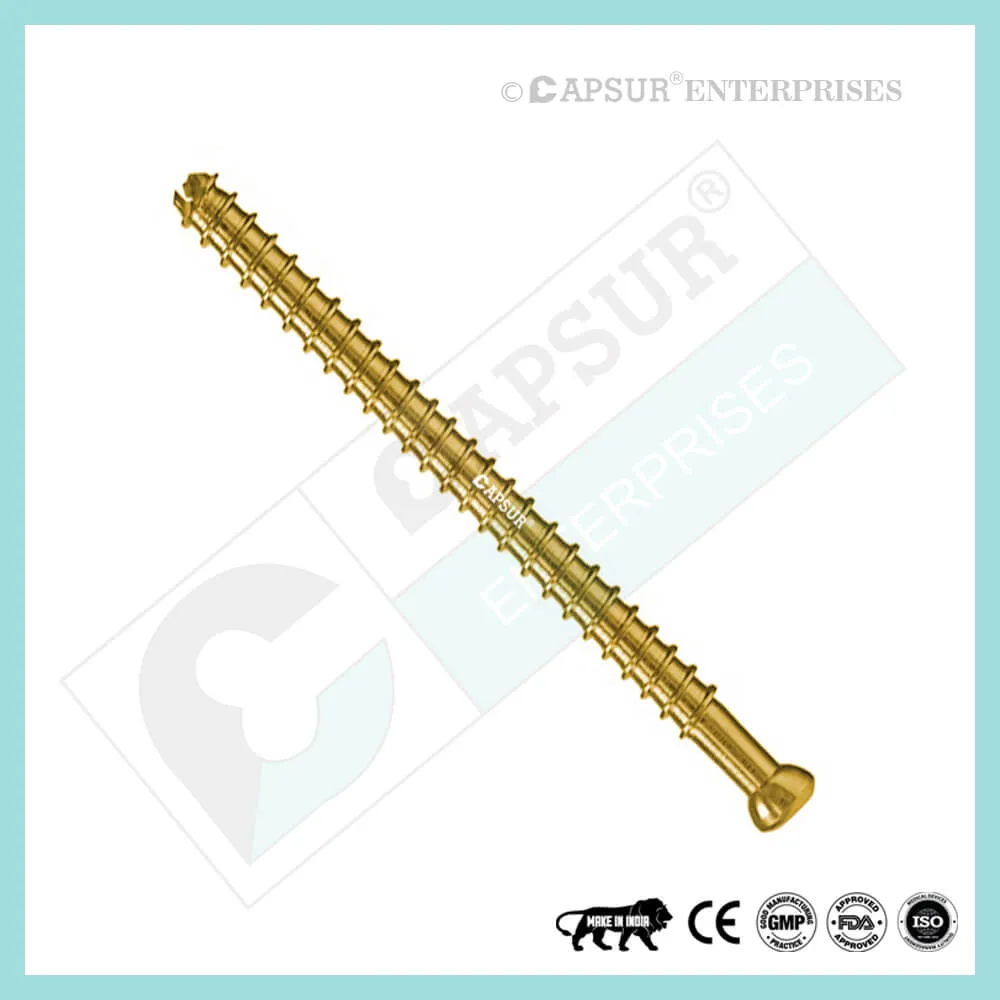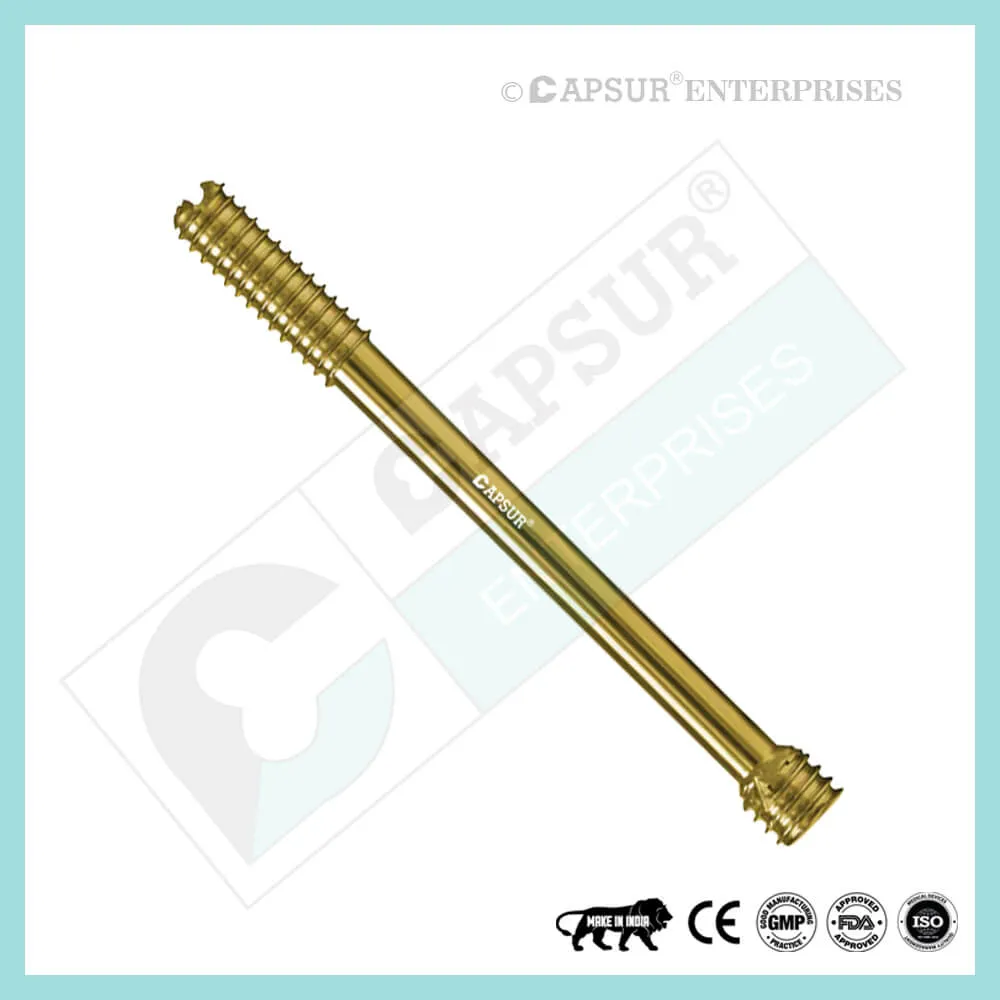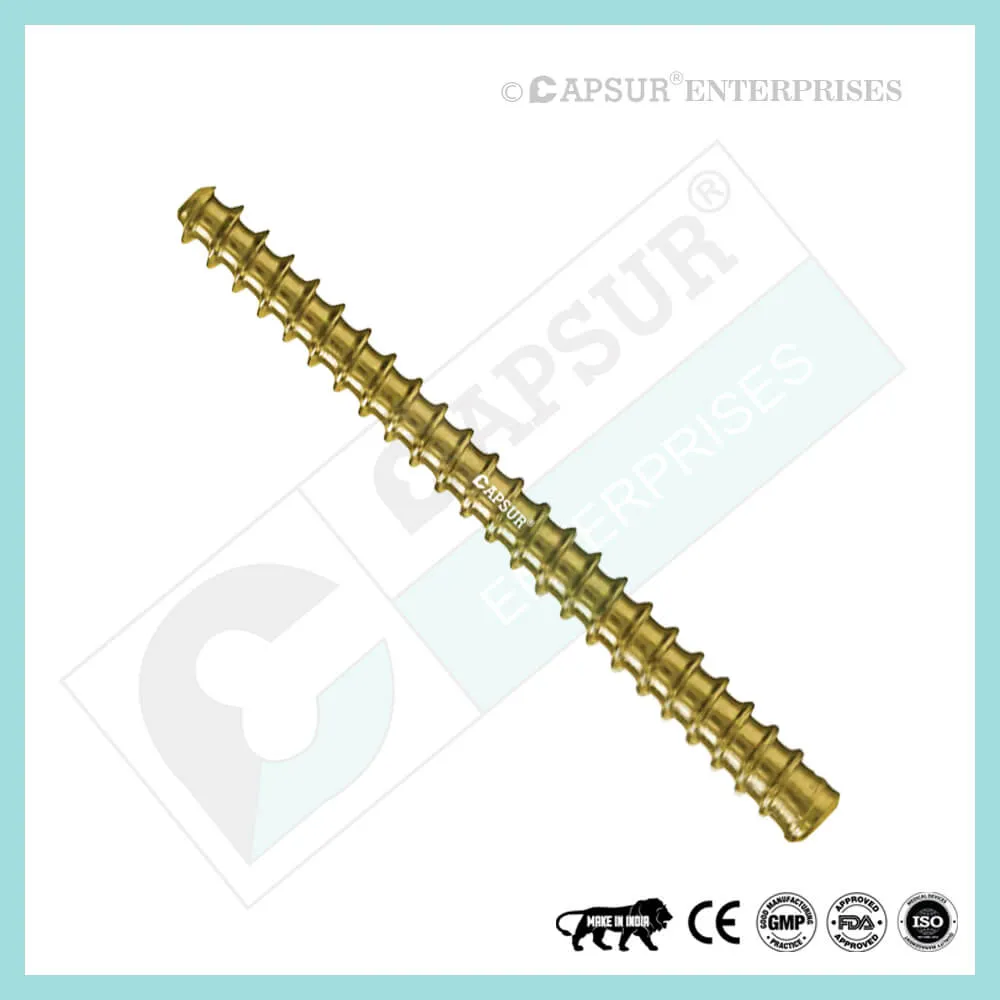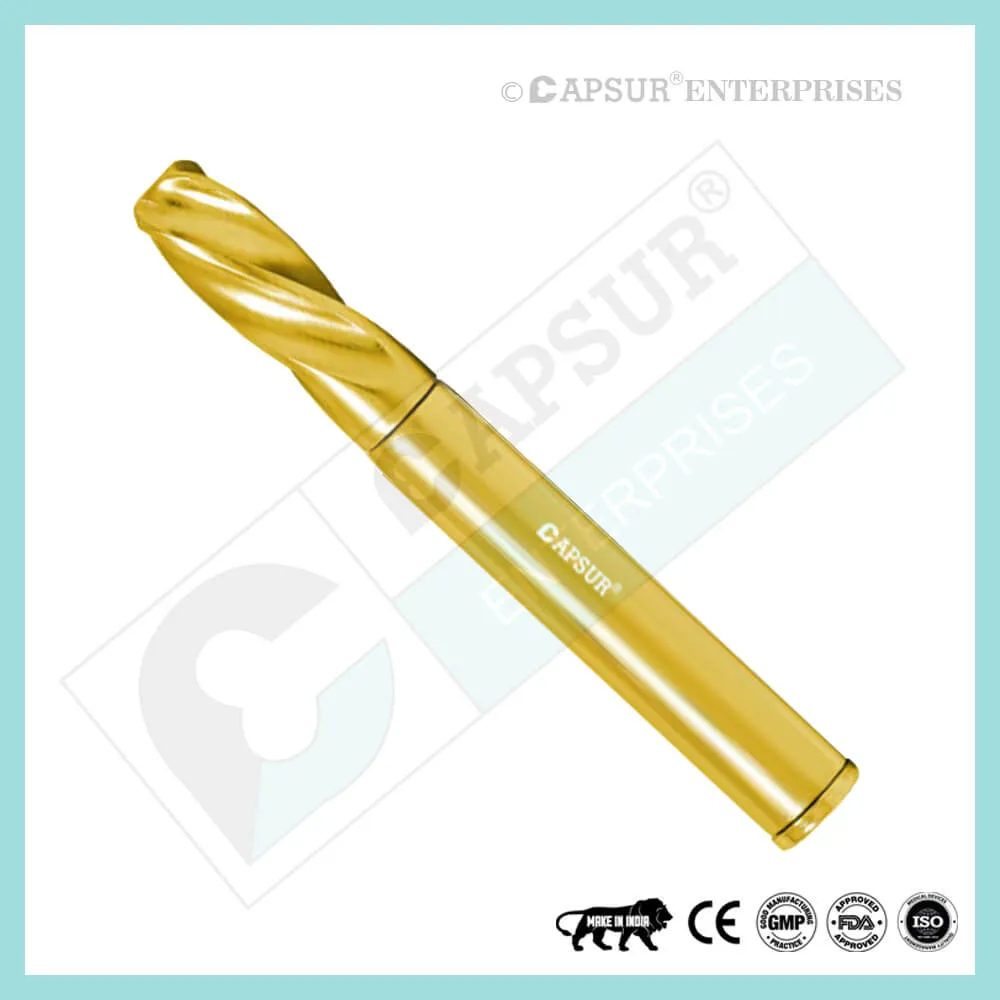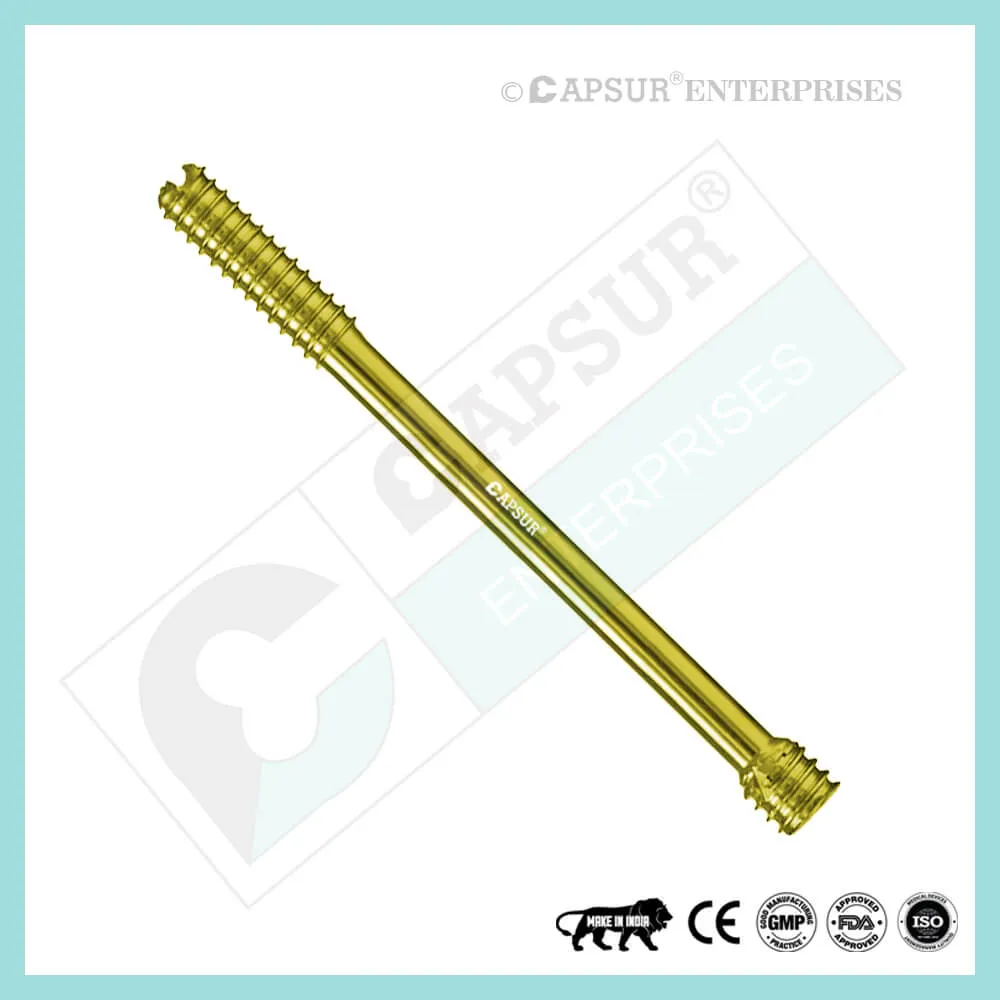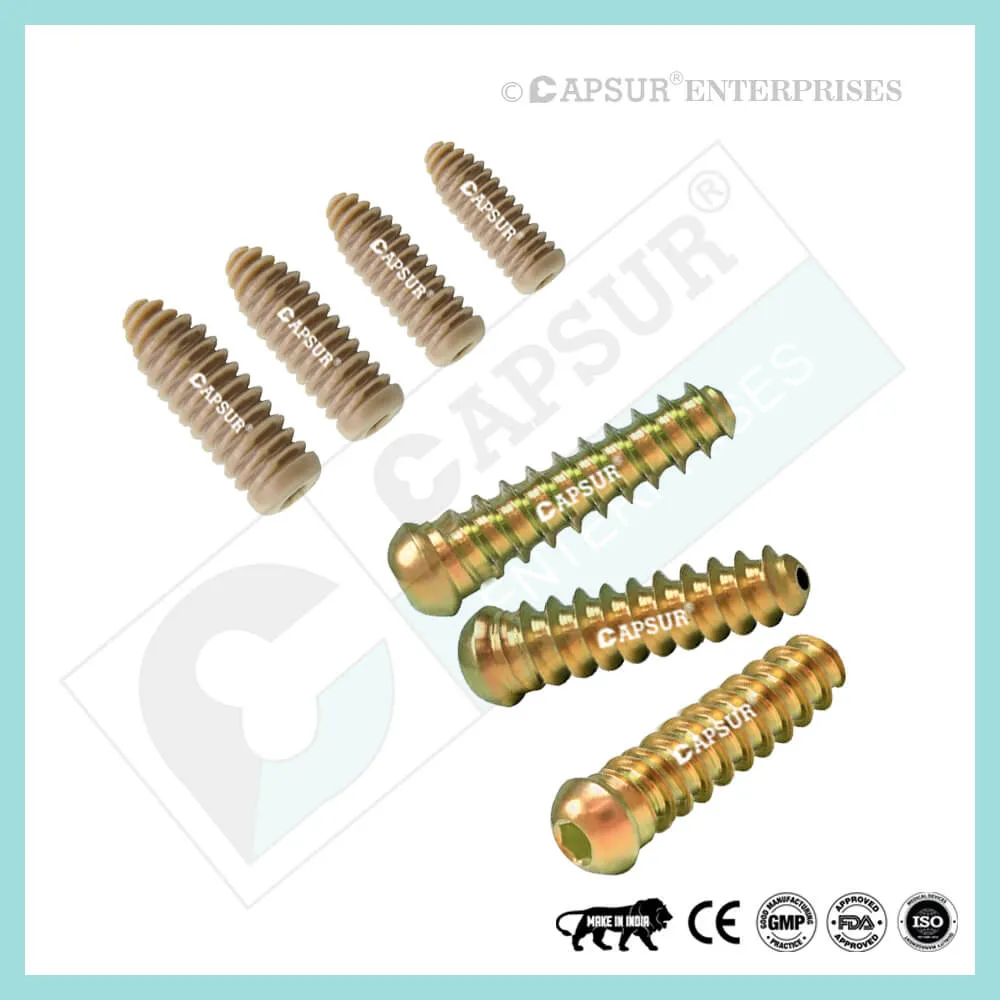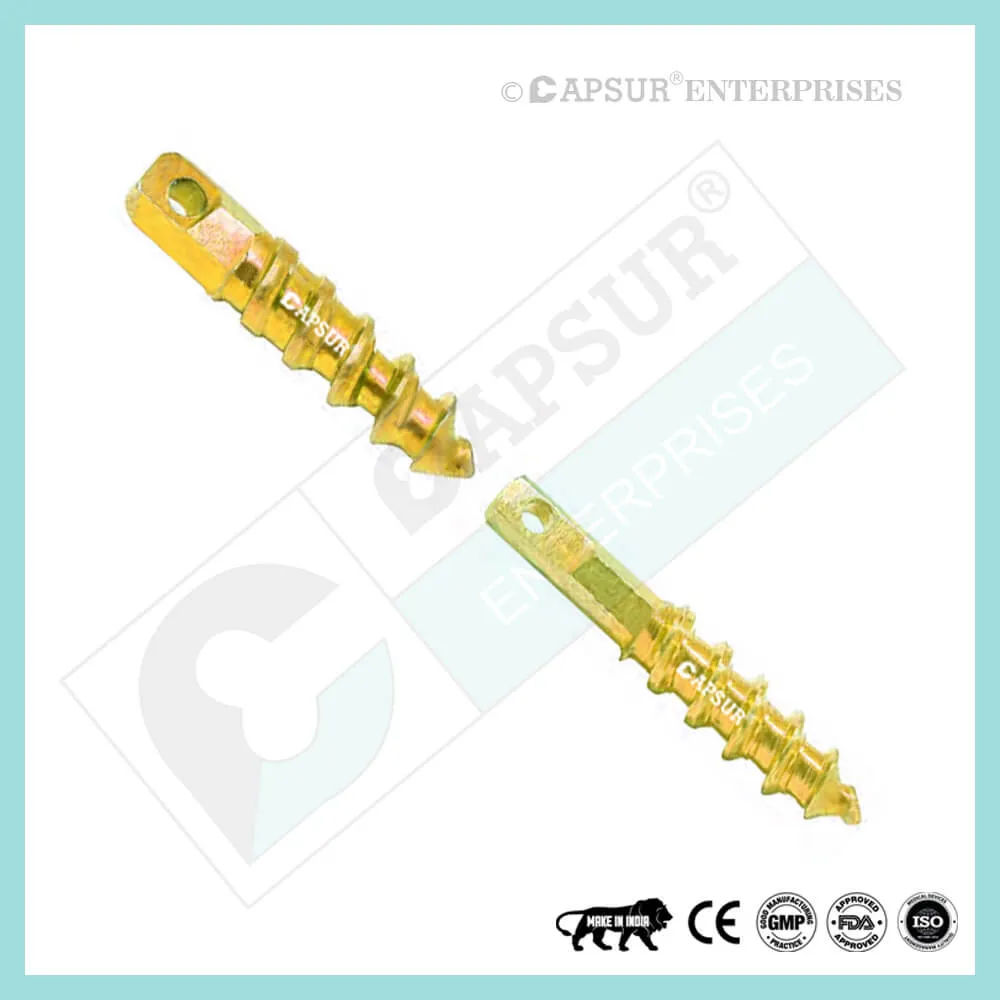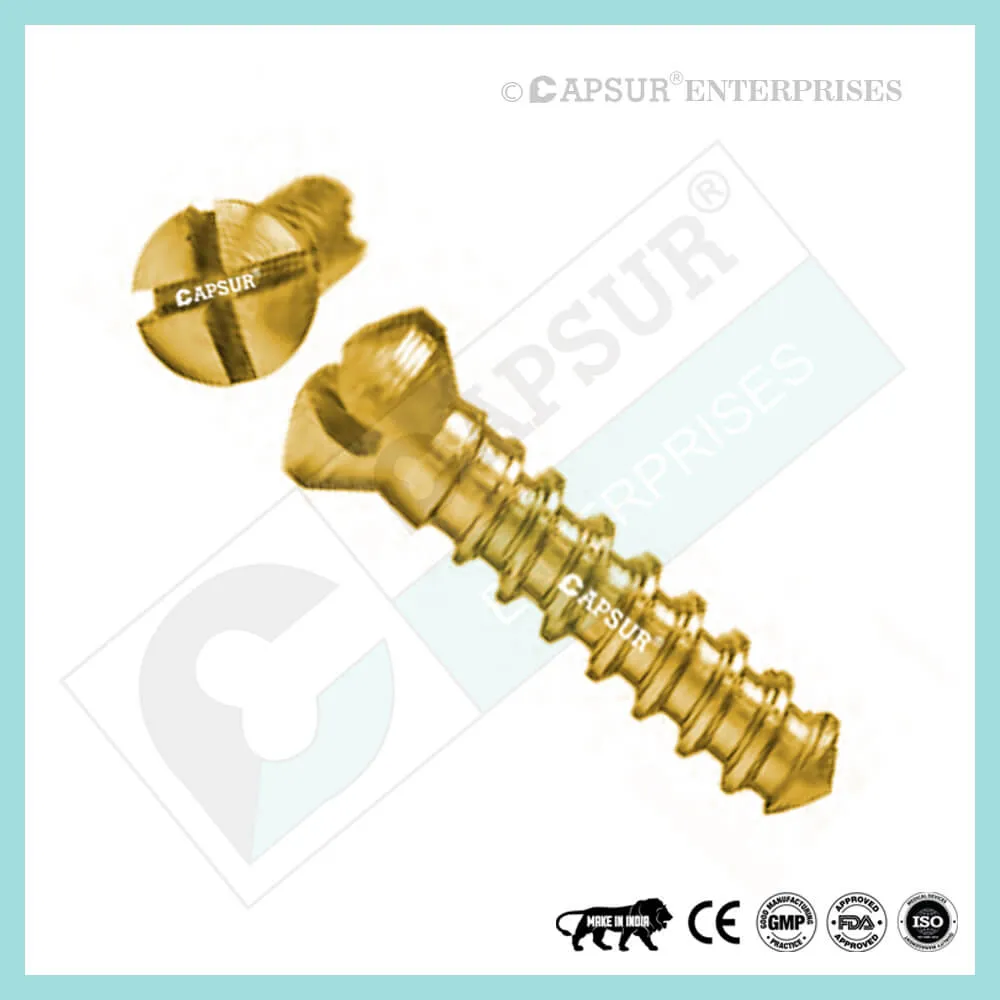Model No: 124433-A12
Description:
- SUPERIOR QUALITY
- AFFORDABLE PRICING
- TIMELY SHIPMENT
- CUSTOMER SATISFACTION
Specification for 4.5 mm Headless Compression Screws, Partially Thread
- Headless design: 4.5 mm headless design Compression without Heads Screw enables screw implantation with little risk of interference or soft tissue irritation in and around articular regions.
- Accurate percutaneous insertion is made easier by cannulated designs, which cause the least amount of soft tissue harm.
- Gradual compression via variable thread pitch: As the screw is advanced, the two fragments are gradually compressed because the wider thread pitch at the screw’s tip penetrates the bone faster than the finer trailing threads.
- Fully threaded: Screws with fully threaded threads have a stronger holding force, which increases stability.
- Sharp cutting flutes: The screw tip’s sharp cutting flutes make it easier to insert the screw.
- Fully and partially threaded screws come in two varieties.
- Titanium and stainless steel versions of the 4.5 mm headless compression screw are both available.
- Headless Compression, 4.5 mm 18mm, 20mm, 22mm, 24mm, 26mm, 28mm, 30mm, 32mm, 34mm, 36mm, 38mm, 40mm, 45mm, 50mm, 55mm, and 60mm are the screw sizes that are readily available.
- The length of this screw can be extended upon request.
- Tools like Bone Taps, Combined Drill & Tap Sleeve, Counter Sink, Depth Gauge, Drill Bits, Drill Guide, Drill Sleeve, Hollow Mill Screw Removal, Reverse Measuring Device, Screw Drivers, Screw Holding Forceps, etc. are available for this screw.
- This screw is self-tapping. While being inserted into the bone, self-tapping screws cut their own thread. When it enters the bone, it makes a tiny hole that forces the threads together tightly. This prevents vibration-induced loosening and makes it possible to disassemble the parts if necessary.
- Headless Compression Screws are available in sterile and non-sterile packaging.
Uses of 4.5 mm Headless Compression Screws, Partially Thread
- Compression without Heads In accordance with their size, screws can be used for fracture repair, osteotomy, arthrodesis, joint fusion, bone reconstruction, and fracture fixation.
- Headless Compression, 4.5 mm Flowing trauma or osteotomies to the hand and foot are intended to be fixed with screws. Screw ends with self-tapping and reverse-cutting flutes make insertion and removal easier. Along its entire length, the tapered profile gains compression and increases pull-out strength.
- Headless Compression, 4.5 mm Small bones, bone fragments, and osteotomies are all intended uses for screws as fixation devices. They are not intended for soft tissue fixation or interference.
Other Useful Info of 4.5 mm Headless Compression Screws, Partially Thread
4.5 mm Headless Compression Screws Surgical Techniques
PATIENT POSITIONING
first Using a bean bag body positioner, place the patient in a semi-lateral position. The operative leg should be draped freely with the up position, and the patient should be moved to the far end of the bed. Before prep and drape, the operative limb should be tested for exertion to ensure that it can be placed on the mini c-arm during surgery.
- OUTLINE OF THE INDICATION AREA
The insertions of the peroneus brevis and tertius tendons, as well as the base of the fifth metatarsal, are indicated.
- ARRANGEMENT AND EXPOSURE
Under fluoroscopic guidance, the.062′′ guide wire for the 4.7 Screw can be placed at the base of the fifth metatarsal. The peroneus brevis and tertius tendons meet at the base of the fifth metatarsal, where a small incision is made. The sural nerve branches that cross the peroneal tendons are carefully noted and guarded. It may be necessary to separate and retract the fibers of the peroneus brevis and lateral aponeurosis tendon away from the styloid process of the base of the fifth metatarsal. On the plantar surface of the base of the fifth metatarsal, a miniature Hohman retractor is positioned. By inserting their fingers between the fourth and fifth metatarsals, the surgeon can reduce the fifth metatarsal fracture. By doing this, the fifth metatarsal fracture site is sealed off while the guide wire, drill, and screw are being inserted. From the fifth metatarsal’s base into the metatarsal shaft’s middle, a guide wire is drilled. In order to prevent distal penetration, it is kept within the intramedullary canal. Use fluoroscopy to confirm placement.
- ESTIMATE DEPTH
Using a cannulated depth gauge, depth is determined from the guide wire’s exposed end.
- GUIDE WIRE IN ADVANCE
To maintain distal pin fixation before drilling, advance the guide wire by about 5 mm after choosing the size.
When advancing the guide wire, exercise caution to avoid damaging the surfaces of the distal joint.
- PLACEMENT OF SOFT TISSUE GUIDE
Utilizing the appropriate cannulated profile drill, position the soft tissue guide (which should be used throughout) over the guide wire and open the near cortex.
- DRILL
Drill the appropriate cannulated, long drill into the far fragment while leaving the soft tissue guide in place. To confirm the desired depth, check the markings on the drill.
Advice: To lessen the effects of varying bone density and distraction during screw insertion, use a long drill.
- COMPRESSION OF FRACTIONS
A screw that is 5 mm shorter than the measured total depth is inserted over the guide wire while shielding the soft tissues with a soft tissue guide in order to account for countersinking and fracture compression.
- INSERTING A SCREW
To prevent cortical penetration, the screw is placed under fluoroscopic guidance. postoperative guidelines: A fiberglass splint is used to support the patient as they are covered in a soft dressing. Depending on the type of fracture, the quality of the bone, and any underlying morbidities, patients may be made non-weight-bearing for a period of 2 to 6 weeks after surgery.
| 4.5 mm Headless Compression Screws, Partially Thread |
|---|


